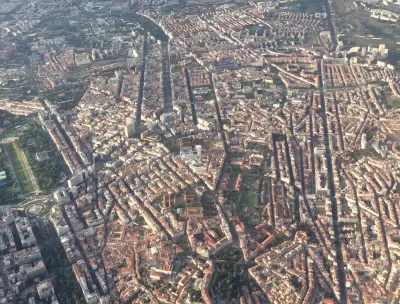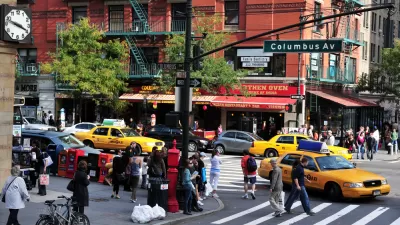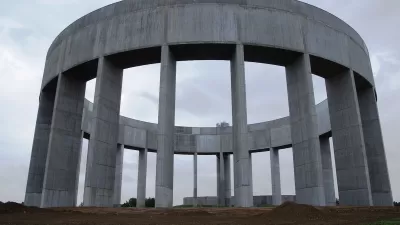Cities are not unlike brains in their capacity to evolve along complex, self-organizing patterns. Studying what some researchers call the "urban connectome" may give us insight into how best to organize the places where we live.

Urbanism and brain science are remarkably similar in some ways, Michael Mehaffy writes. "There is good reason to think that, as with brains, a lot of what happens in cities has more to do with the overall pattern of connections, and less to do with particular elements."
He goes on, "As Jane Jacobs pointed out over half a century ago, the city is a kind of 'intricate ballet' of people interacting, going about their plans, and shaping the life of the city, from the smallest scales to the largest." City folks thrive on knowledge spillovers, casual interactions with new people that give rise to novel enterprises and economic activity.
According to such a model, the health of cities depends on how effectively these kinds of "neural pathways" can form and reform. "In the case of cities, we have to ensure that we have well-connected, walkable cities, facilitating many cross-connections," Mehaffy writes.
The digital infrastructure of so-called smart cities can enhance such a network, but physical interactions between city dwellers form its foundation. "A corollary is that in our automobile-connected suburbs, it seems we have been replicating this pattern of connections—but only with heavy and unsustainable inputs of resources," Mehaffy says.
To get the most out of an urban connectome model, he goes on, we need to examine "the most effective patterns from a range of cities around the world—and over centuries of evolution."
FULL STORY: Wonders of the ‘urban connectome’

Alabama: Trump Terminates Settlements for Black Communities Harmed By Raw Sewage
Trump deemed the landmark civil rights agreement “illegal DEI and environmental justice policy.”

Planetizen Federal Action Tracker
A weekly monitor of how Trump’s orders and actions are impacting planners and planning in America.

Why Should We Subsidize Public Transportation?
Many public transit agencies face financial stress due to rising costs, declining fare revenue, and declining subsidies. Transit advocates must provide a strong business case for increasing public transit funding.

Understanding Road Diets
An explainer from Momentum highlights the advantages of reducing vehicle lanes in favor of more bike, transit, and pedestrian infrastructure.

New California Law Regulates Warehouse Pollution
A new law tightens building and emissions regulations for large distribution warehouses to mitigate air pollution and traffic in surrounding communities.

Phoenix Announces Opening Date for Light Rail Extension
The South Central extension will connect South Phoenix to downtown and other major hubs starting on June 7.
Urban Design for Planners 1: Software Tools
This six-course series explores essential urban design concepts using open source software and equips planners with the tools they need to participate fully in the urban design process.
Planning for Universal Design
Learn the tools for implementing Universal Design in planning regulations.
Caltrans
Smith Gee Studio
Institute for Housing and Urban Development Studies (IHS)
City of Grandview
Harvard GSD Executive Education
Toledo-Lucas County Plan Commissions
Salt Lake City
NYU Wagner Graduate School of Public Service




























